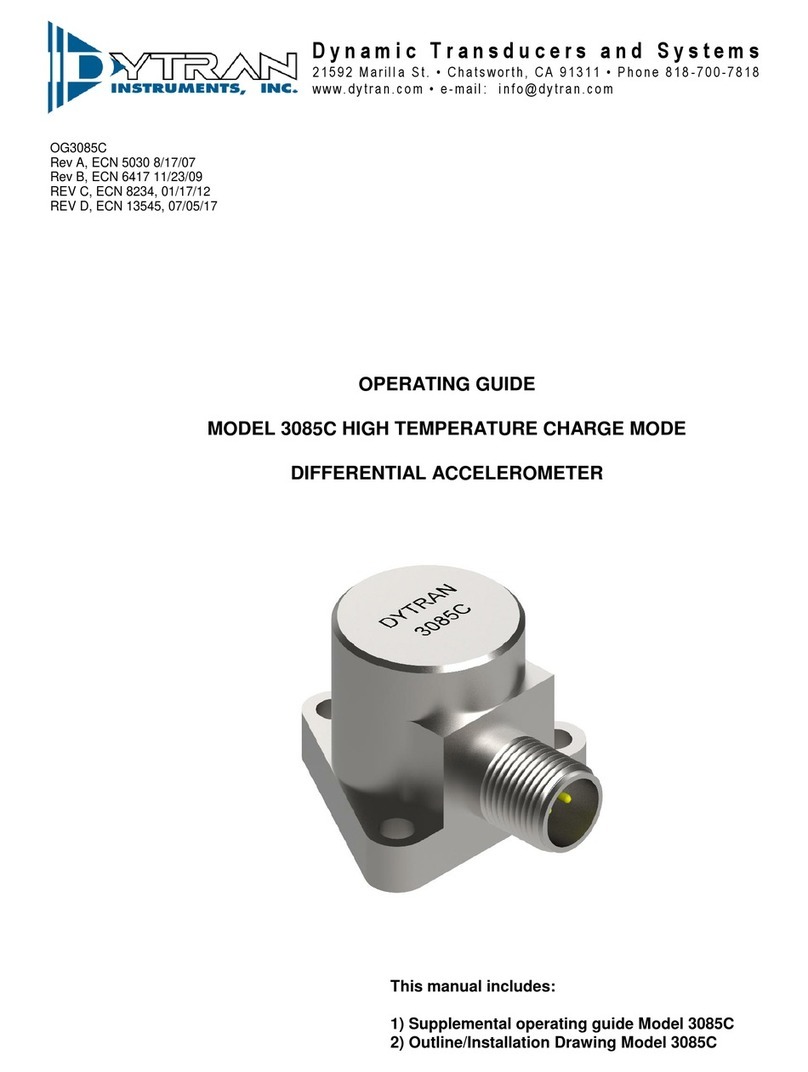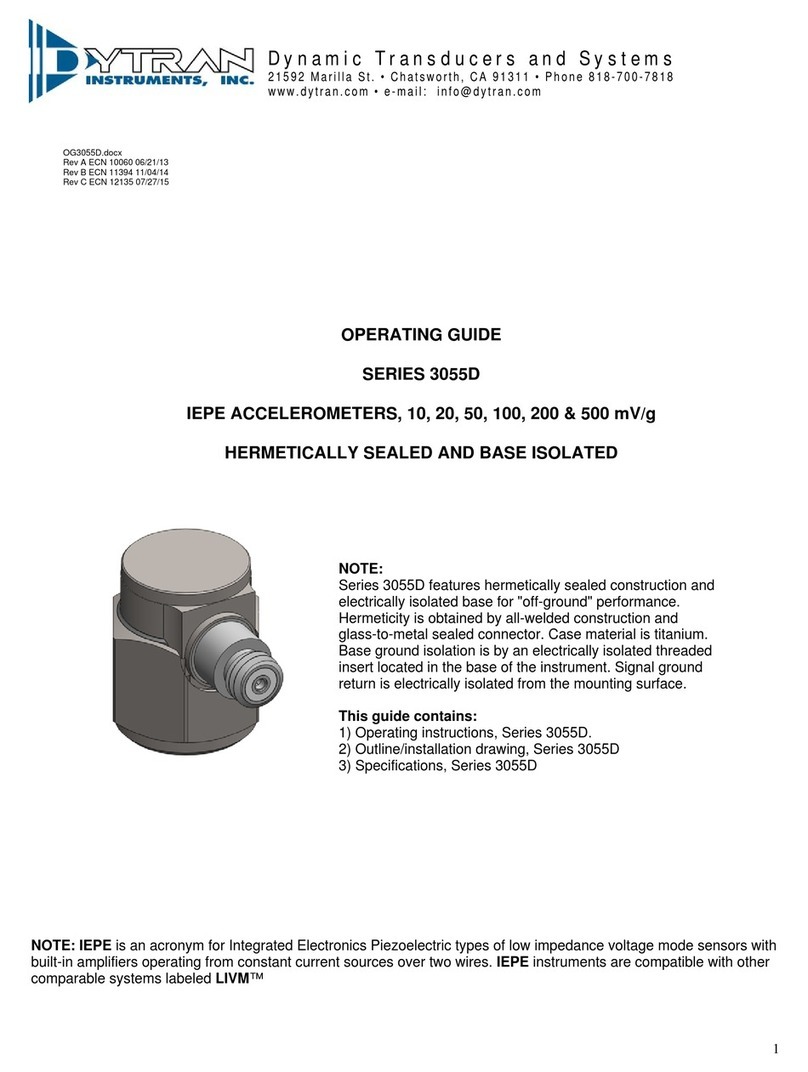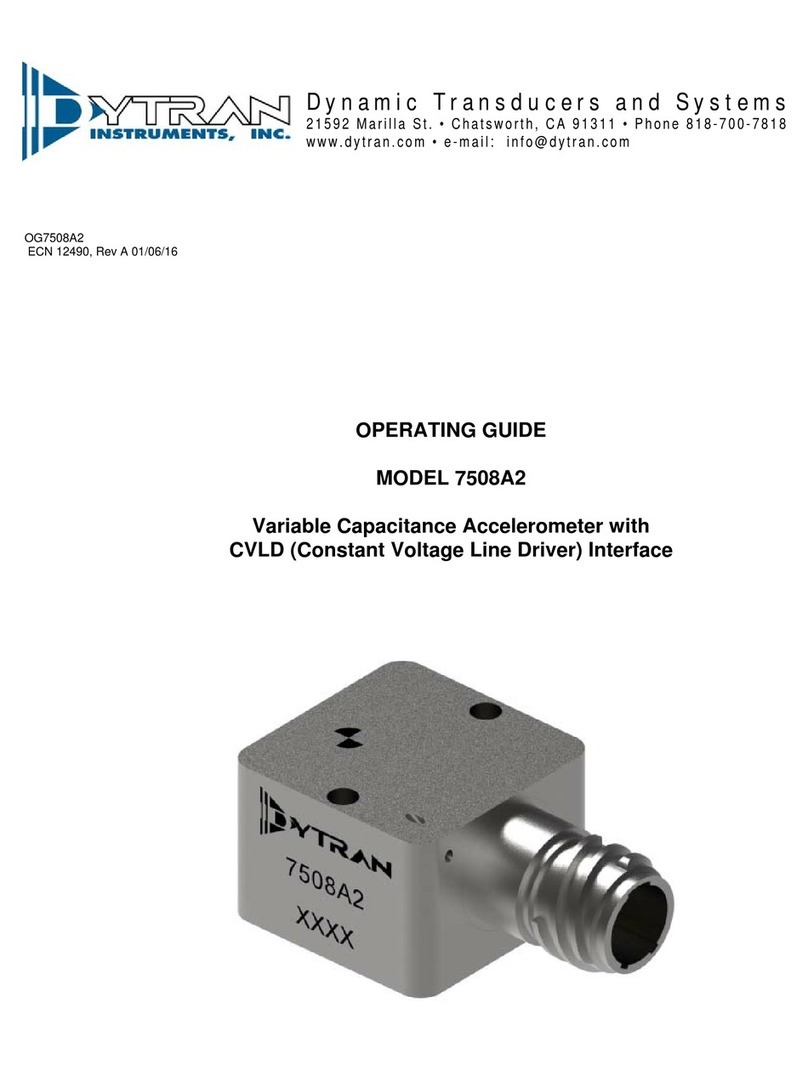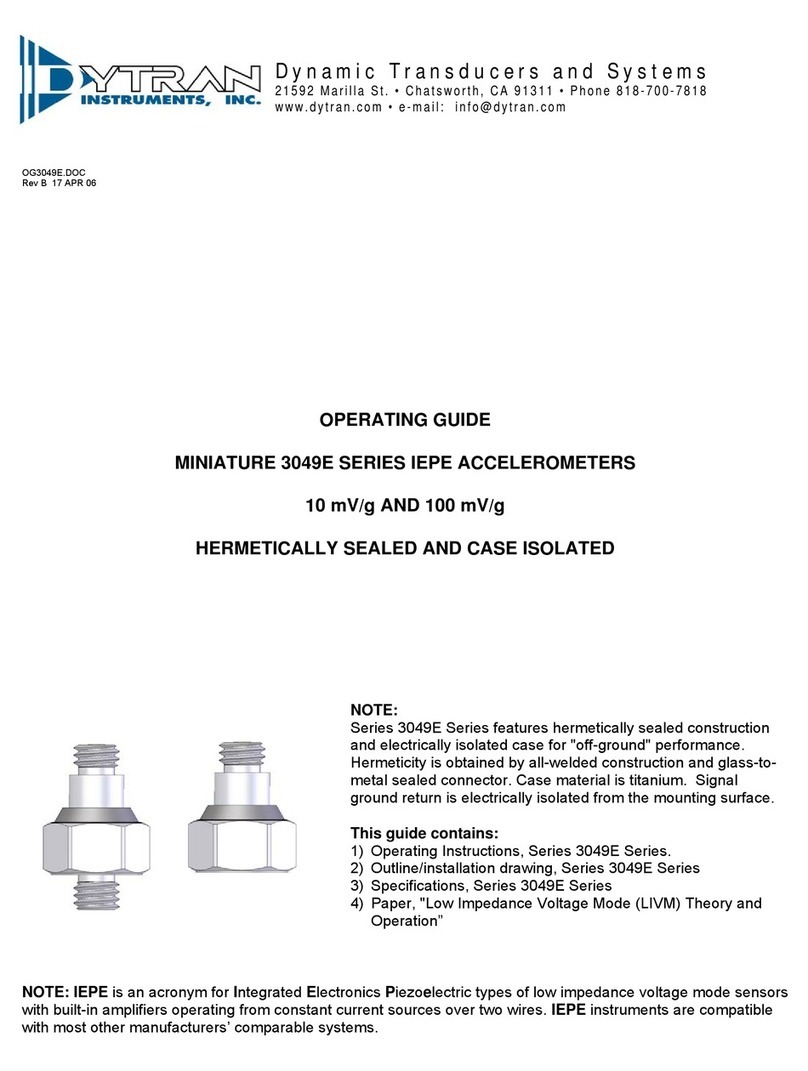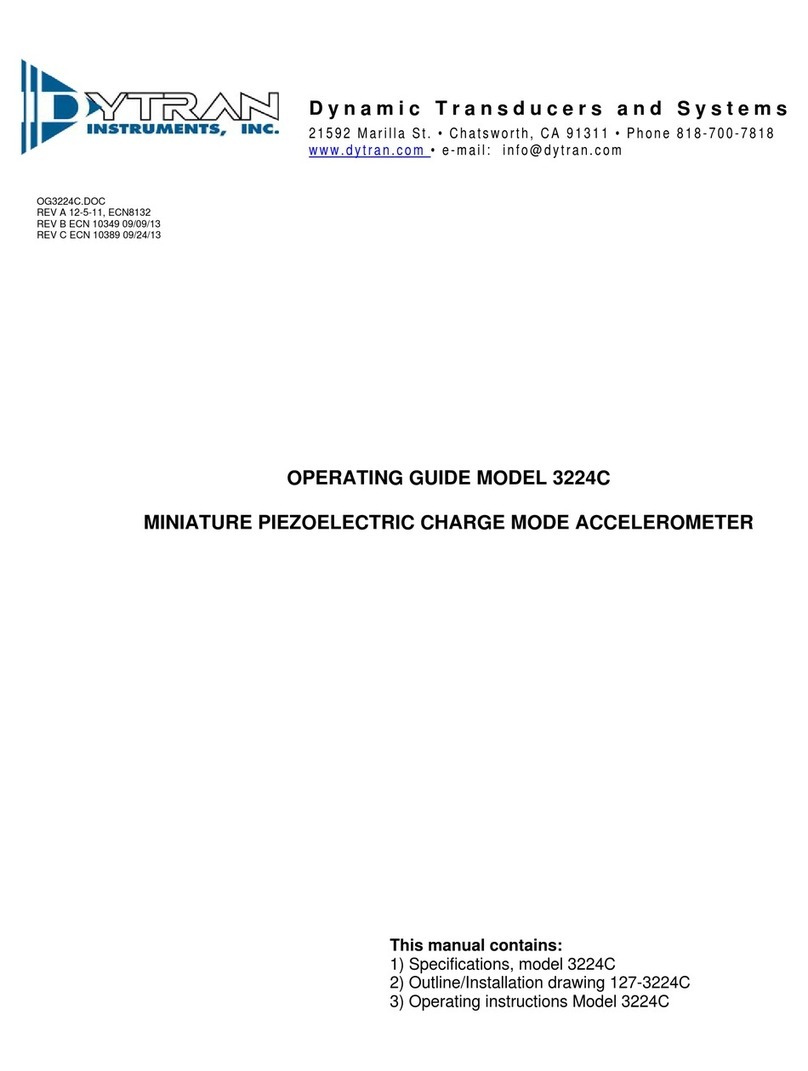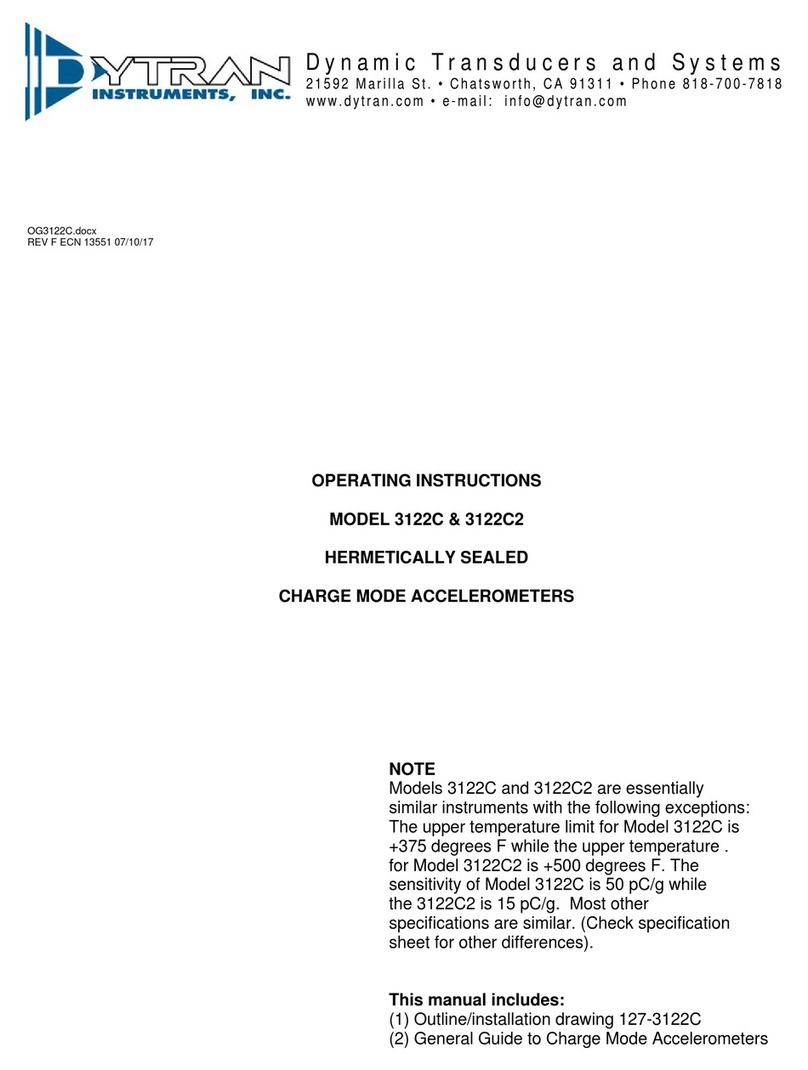
2
OPERATING INSTRUCTIONS
MODEL 3033B2 TRIAXIAL ACCELEROMETER
INTRODUCTION
Model 3033B2 triaxial accelerometer is a
three-axis miniature quartz shear LIVM
accelerometer. Three very tiny quartz shear
seismic elements with self-contained impedance
converting amplifiers are mounted orthogonally
within a stainless steel housing. The latest quartz
shear technology ensures excellent stability and
freedom from base strain effects, extremely
important in triaxial designs. The higher voltage
sensitivity of quartz in the shear mode results in
lower weight.
The low-profile housing is only .31 in. high
and is .60 wide x .60 long. A through hole accepts
a Model 6545A1 #4-40 socket head cap screw for
convenient mounting to the test surface with The
screw head is recessed into the housing resulting
in no increase in height for the head of the
mounting screw. The central screw mount allows
the user to align the axes in exactly the direction
where they are needed. This versatile
accelerometer may also be adhesive mounted .
DESCRIPTION
See Outline/Installation drawing 127-
3033B2 for dimensions and configuration details of
this unit.
Model 3033B2 features a stainless steel
housing for high rigidity for superior high frequency
response. The hermetically sealed quartz shear
elements are bonded into cavities in the housings
and epoxied in place as modular building blocks
and as such, cannot be removed from the housing.
The elements are electrically insulated from power
ground.
Electrical connections are by a single 4-
wire molded cable assembly which is TIG welded
to the body of the accelerometer and which
terminates in 3 BNC plug connectors at the end of
a 3ft. 8in. long cable. The cable projects radially
from a 45° angled surface at one corner of the
housing. This design keeps the profile low and
provides a rugged electrical connection.
Each axis is identified with arrows and
identifying numerals etched into the top surface of
this unit. The arrows delineate the sense and
direction of acceleration of each axis for positive-
going output signal (voltage).
Refer to the accompanying specification
sheet for acceleration ranges, sensitivities and
other operational characteristics for this model.
INSTALLATION
Refer to the outline/installation drawing
127-3033B2 for installation details.
To mount the tri-ax, it is only necessary to
prepare a flat area with 4-40 tapped hole at the
center. Model 3033B2 requires a .58 x .58 flat area
for mounting. Prepare this mounting surface by
spot facing, grinding. turning, etc., controlling the
flatness to ±.001 TIR over the entire area for best
high frequency response.
At the center of the area, drill and tap the
#4-40 hole for the Model 6545A1 mounting screw
in accordance with instructions in the
outline/installation drawing provided.
NOTE: before mounting the accelerometer, clean
the mounting surface thoroughly to preclude the
inclusion of foreign particles between mating
surfaces. It is necessary that the accelerometer
and mounting surfaces be in intimate contact for
integrity of calibration and for accurate high
frequency response.
Use mounting hardware supplied with the
accelerometer to fasten the unit to its mounting
surface. Torque the mounting screw in accordance
with instructions in the Outline/Installation drawing.
For permanent installations, use thread
locking compounds on the screw threads.
OPERATION
Connect the accelerometer to the constant
power units in accordance with cable tags
identifying the axes as outlined in the
Outline/Installation drawing 127-3033B2.
Refer to the paper “Low Impedance
Voltage Mode (LIVM) Theory and Operation” for a
guide to operation of this accelerometer.












